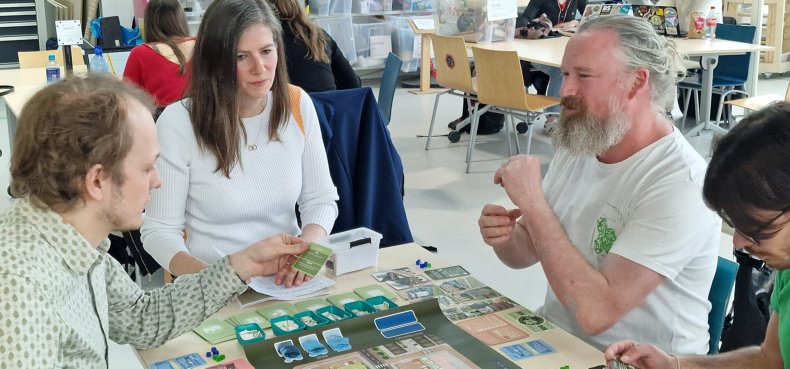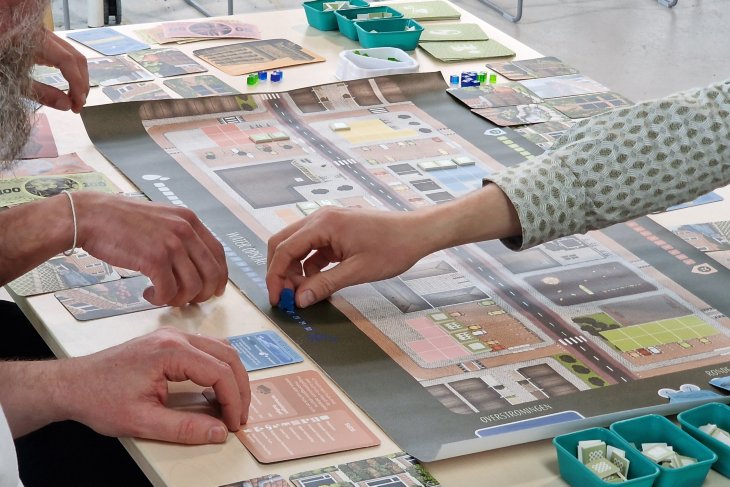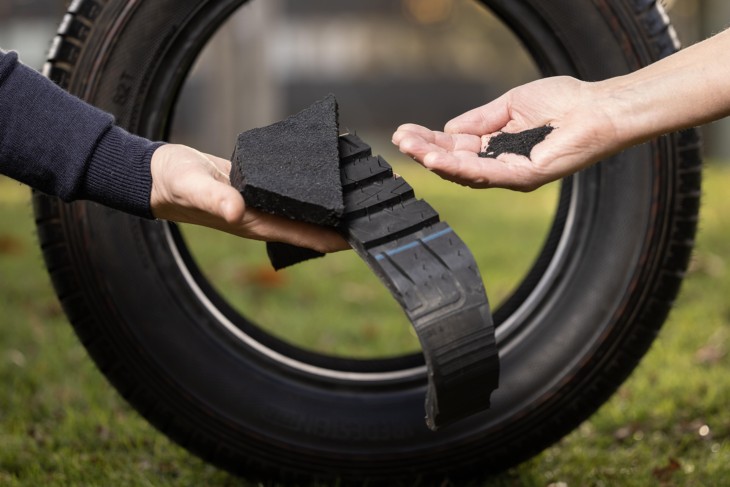When Carissa invited me to be part of her research by playing a serious game, I didn’t hesitate. As a board game enthusiast, the idea of combining my hobby with science felt like a match made in heaven. The game we played, Sudsbury 2.0, is a collaborative serious game about climate adaptation, specifically focused on Sustainable Urban Drainage Systems (SUDS). It was developed while Carissa was a member of the Climate Action Programme at TU Delft.
Learning while playing
Carissa’s work focuses on bridging the gap between scientists, practitioners, students, and other dwellers. She researches design, planning and model building for collective action towards resilient and climate-adaptive cities and regions. A serious game like Sudsbury 2.0 is just one example. What’s unique about Sudsbury 2.0 is that it’s not just about playing. It’s about learning and reflecting together.
The idea behind games like Sudsbury 2.0 is to create a space where planners, citizens, and other stakeholders can meet and learn from each other. In one of her studies, Carissa found that serious games could elicit knowledge from diverse actor groups, simplifying complex computational models into tangible, interactive formats.
How Sudsbury 2.0 Works
At its core, Sudsbury 2.0 is about tackling extreme rainfall in urban areas. Players act as residents in a fictional neighbourhood and must invest in measures to prevent flooding, such as buying a rain barrel or installing green roofs. Each decision comes with trade-offs. Some measures are expensive, while others take up a lot of precious space. Some measures, the ones involving plants, were even at risk of being destroyed during a drought.
The game is slightly asymmetrical. Homeowners and renters have different amounts of disposable income and you’ll need a garden to be able to build a pond. Some investments increase the neighbourhood's focus mostly on resilience to heavy rainfall, while others mostly increase liveability. Both are needed to win the game. This forces players to think not only about what’s best for them but also about how to collaborate to keep the neighbourhood safe.
Saving Sudsbury
As part of my Kees study, I joined a group of five other participants at the library in Enschede to play Sudsbury 2.0. As a board game enthusiast, I felt right at home, even though this wasn’t your average game night. Each turn we all looked at possible investments. Some ‘neighbours’ collaborated to start with bigger investments, while others started saving.
To make an investment, we had to answer quiz questions about our investment correctly. With each round, we faced storms, and any lack of preparation meant flooded streets and a drop in the neighbourhood’s liveability score. Although we were technically competing to make the most climate-friendly investments, the real goal was to prevent the neighbourhood from flooding.

Discussing real life
I didn’t win the game, but the real success was the conversation. During the game, we weren’t just talking about strategies; we were talking about what it would take to implement these ideas in real life. What struck me most about Sudsbury 2.0 was how it turned a daunting topic into something approachable and engaging. It’s easy to feel powerless when facing big challenges like urban flooding, but this game showed me the solutions you can already use right now.
As cities face more extreme weather due to climate change, games like Sudsbury 2.0 can be powerful tools to involve citizens in decision-making. They simplify complex systems and make abstract issues tangible. Instead of just talking about ‘climate resilience’, you’re actively building it in a fun experience. And who knows, maybe next time I will win and become an honorary mayor of Sudsbury.




